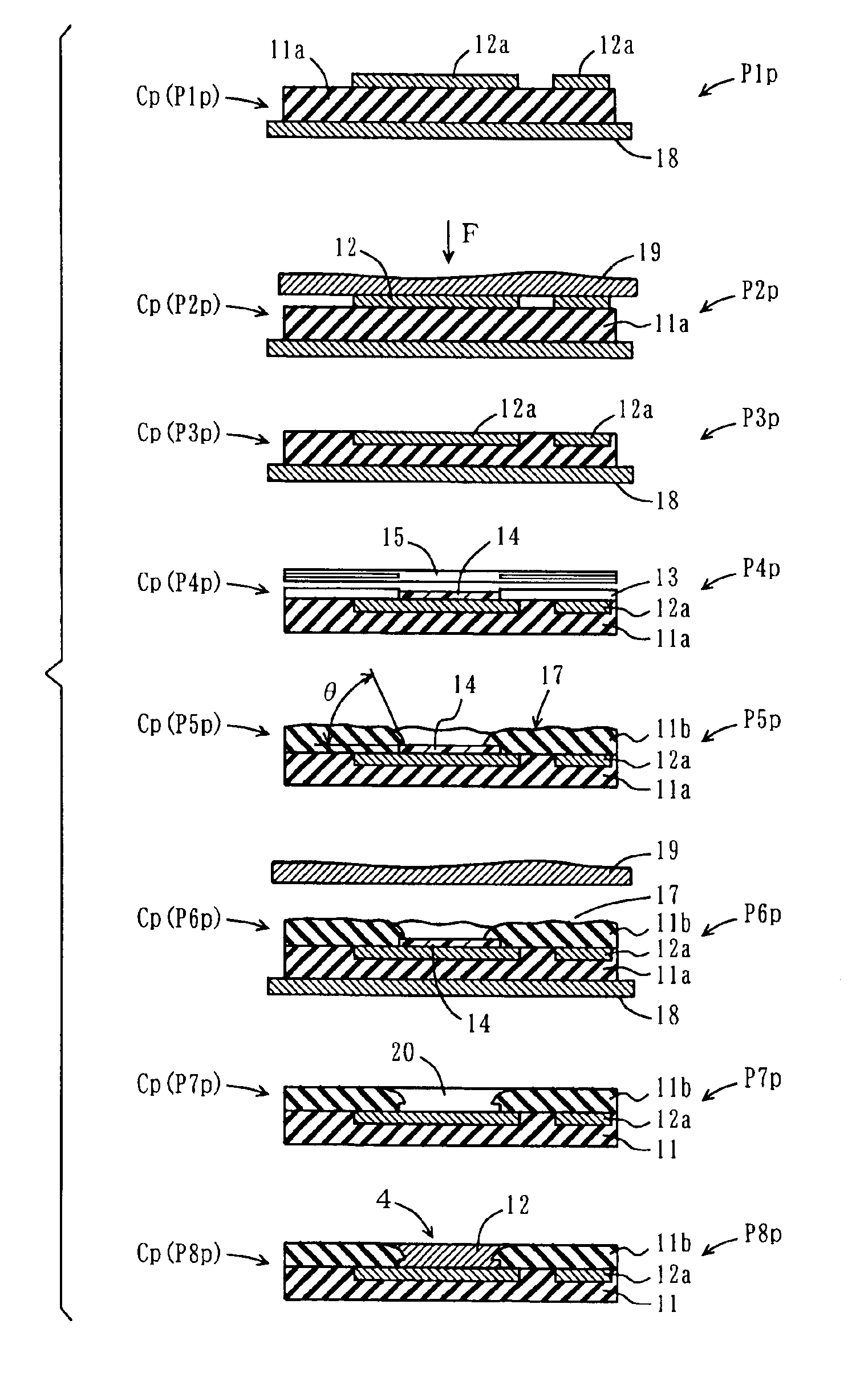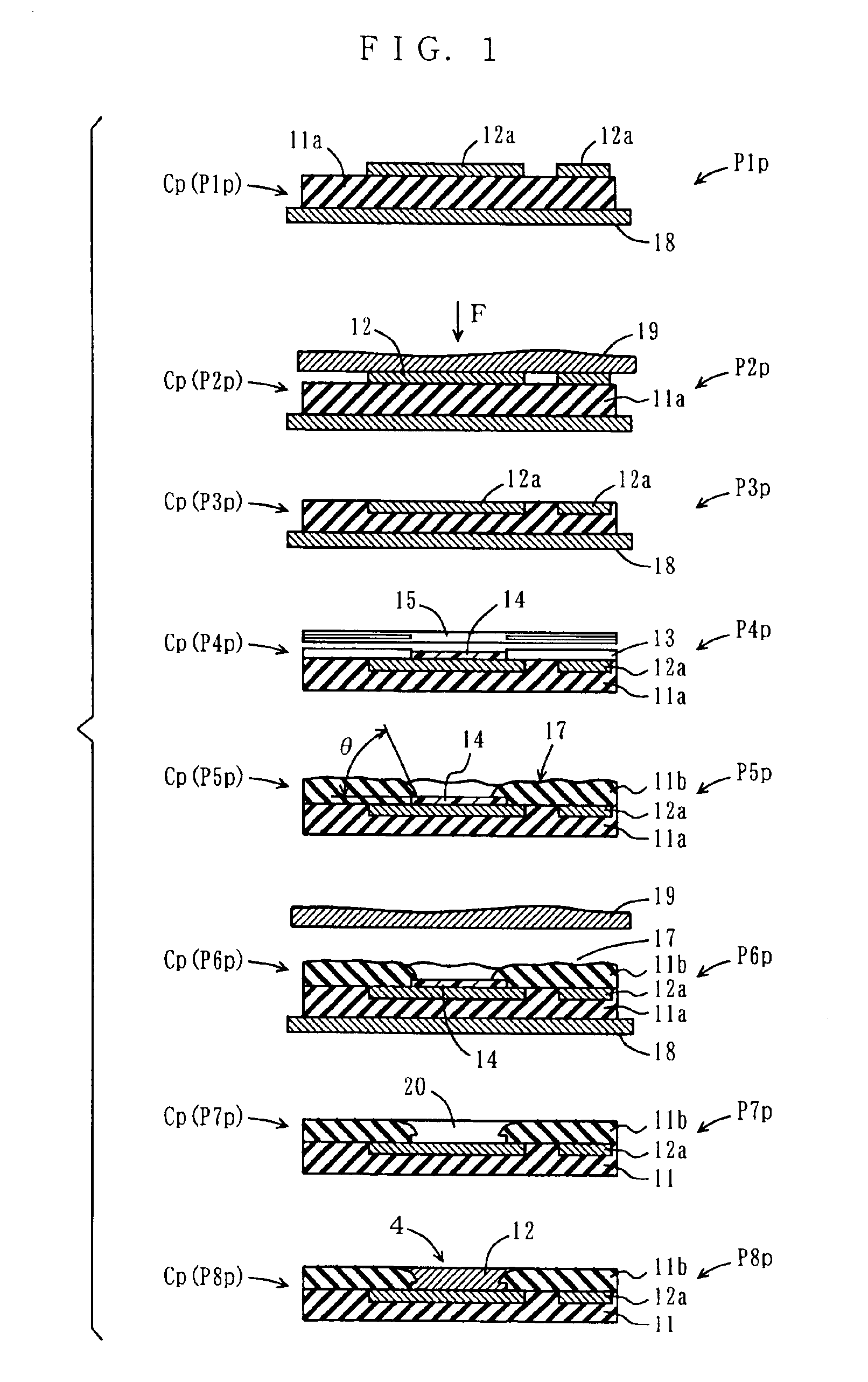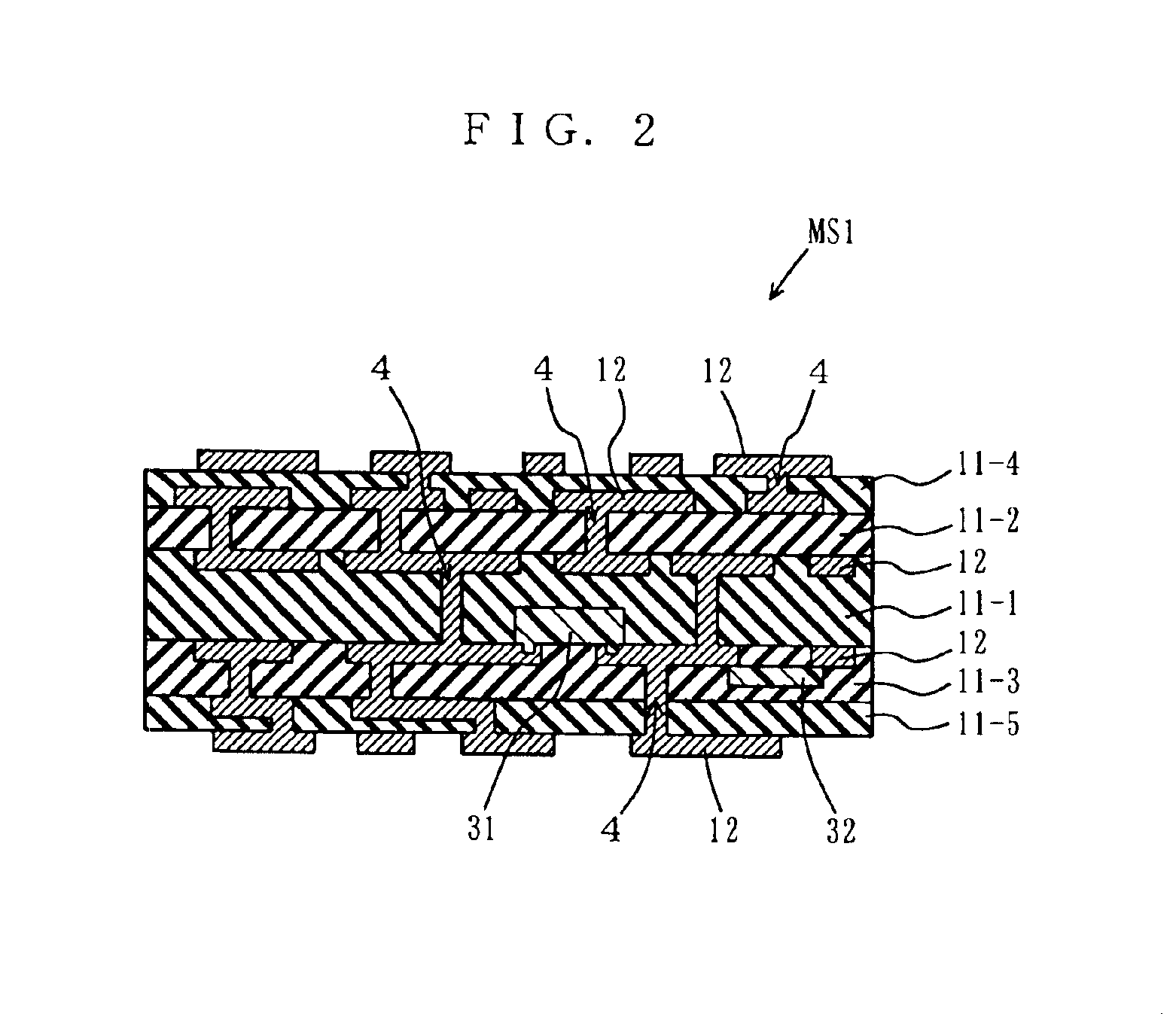Multilayered circuit board forming method and multilayered circuit board
a technology of multi-layer circuit boards and forming methods, applied in resist details, conductive pattern formation, chemistry apparatus and processes, etc., can solve the problems of difficult to accurately form electronic circuits, insufficient treatment to eliminate such occurrences, and extreme deformation of electrical characteristics of electronic circuits, etc., to achieve easy control of positional accuracy and accuracy. high, the effect of high quality
- Summary
- Abstract
- Description
- Claims
- Application Information
AI Technical Summary
Benefits of technology
Problems solved by technology
Method used
Image
Examples
first embodiment
[0036
[0037]With reference to FIG. 1, a method of forming a multilayered circuit board according to a first embodiment of the present invention is described below. A multilayered circuit board MS1 according to the present invention is formed by using a screen printing scheme as in the above-described conventional successive formation scheme.
[0038]FIG. 1 illustrates a procedure of successively forming circuit boards one by one starting from a circuit board of a first layer by using a screen printing scheme, the procedure including processes P1p, P2p, P3p, P4p, P5p, P6p, P7p, and P8p shown stepwise. For convenience in description, circuit boards corresponding to these processes are hereinafter referred to as a circuit board CP(P1p), a circuit board CP(P2p), a circuit board CP(P3p), a circuit board CP(P4p), a circuit board CP(P5p), a circuit board CP(P6p), a circuit board CP(P7p), and a circuit board CP(P8p), respectively.
[0039]In process P1p, an insulating board 11a, which forms a circ...
second embodiment
[0059
[0060]With reference to FIGS. 2 and 3, a scheme is described below for alternately printing a conductor and an insulating layer on an insulating board to form a multilayered circuit board. FIG. 2 is a cross section of a multilayered circuit board MS2 according to a second embodiment. FIG. 3 schematically illustrates a procedure of forming the multilayered circuit board MS2.
[0061]As illustrated in FIG. 2, the multilayered circuit board MS2 is formed by layering five insulating boards 11-1, 11-2, 11-3, 11-4 and 11-5, each having mounted thereon electric circuits. Here, components, a heating and pressuring scheme, and conditions thereof used in the present embodiment are basically the same as those described in the first embodiment, and therefore are not described herein unless otherwise particularly required.
[0062]As illustrated in FIG. 3, first prepared in process P1p-1a is the insulating board 11-1 formed of a sheet or a film containing a plastic element, such as a polyester re...
third embodiment
[0073
[0074]With reference to FIG. 4, a scheme is described below for forming a multilayered circuit board incorporated with a component, such as a semiconductor, a resistor, a capacitor, and a coil. FIG. 4 schematically illustrates a procedure of forming a multilayered circuit board MS3 according to a third embodiment. Here, components, a heating and pressuring scheme, and conditions thereof used in the present embodiment are basically the same as those described in the first and second embodiments, and therefore are not described herein unless otherwise particularly required.
[0075]In process P1p-b, an insulating board 11-a formed by the scheme according to the first or second embodiment, and embedded with conductor 12a for forming electronic circuits are provided together with a semiconductor device 31 having bumps 32 formed at an electrode portion. The semiconductor device 31 is placed at a predetermined location on the insulating board 11-a so that a side where the bumps 32 of th...
PUM
| Property | Measurement | Unit |
|---|---|---|
| Temperature | aaaaa | aaaaa |
| Pressure | aaaaa | aaaaa |
| Surface | aaaaa | aaaaa |
Abstract
Description
Claims
Application Information
 Login to View More
Login to View More - R&D
- Intellectual Property
- Life Sciences
- Materials
- Tech Scout
- Unparalleled Data Quality
- Higher Quality Content
- 60% Fewer Hallucinations
Browse by: Latest US Patents, China's latest patents, Technical Efficacy Thesaurus, Application Domain, Technology Topic, Popular Technical Reports.
© 2025 PatSnap. All rights reserved.Legal|Privacy policy|Modern Slavery Act Transparency Statement|Sitemap|About US| Contact US: help@patsnap.com



